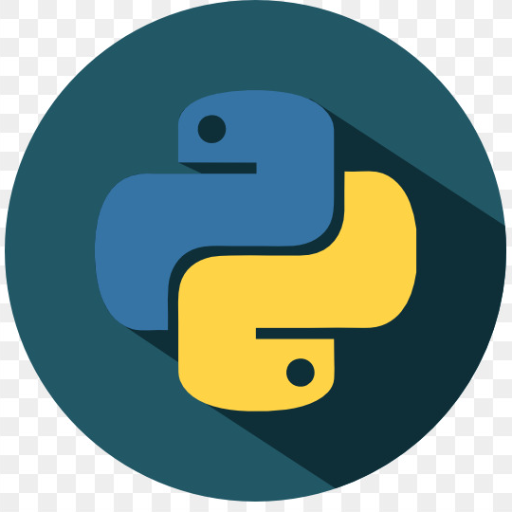Python-AI-powered Python Assistant
AI-powered Tool for Python Mastery
How do I fix this Python error?
Show me an example of a Python function.
Can you help with JavaScript code?
Explain this Python code snippet.
Related Tools
Load More
Learn: Python
First steps of learning Python

Python Code Expert
Develop Python applications that are efficient, maintainable, testable, performant, and robust. Excels at OOP design, error handling, documentation, logging, and much more. Includes unit tests written in pytest for all code snippets.
Python Coding Companion
Assists in creating and understanding python applications and scripts.

Python hacker
Autonomous Python hacker expert, handling coding tasks without user input.

Python Tutor
Concise, example-focused Python programming tutor for beginners to intermediates.

Python Expert
Practical Python tutor with a focus on real-world applications and hands-on learning with projects.
20.0 / 5 (200 votes)
Introduction to Python
Python is a high-level, interpreted programming language known for its simplicity and readability. It was created by Guido van Rossum and first released in 1991. Python's design philosophy emphasizes code readability with its notable use of significant whitespace. Its syntax allows programmers to express concepts in fewer lines of code than would be possible in languages such as C++ or Java. Python is dynamically typed and garbage-collected. It supports multiple programming paradigms, including structured (particularly procedural), object-oriented, and functional programming. Due to its comprehensive standard library, Python is often described as a 'batteries-included' language.

Main Functions of Python
Data Analysis
Example
Using libraries such as Pandas and NumPy to manipulate and analyze large datasets.
Scenario
A data scientist uses Python to clean and analyze data from a CSV file, generating meaningful insights and visualizations to inform business decisions.
Web Development
Example
Frameworks like Django and Flask help build web applications.
Scenario
A web developer uses Django to create a robust e-commerce website, complete with user authentication, product catalog, and payment processing.
Automation and Scripting
Example
Writing scripts to automate repetitive tasks using Python's extensive standard library.
Scenario
A system administrator writes a Python script to automate the backup of critical files and databases, reducing the risk of data loss and improving efficiency.
Ideal Users of Python
Data Scientists and Analysts
Data professionals benefit from Python's powerful libraries (e.g., Pandas, NumPy, Matplotlib) for data manipulation, analysis, and visualization. Its ease of use and readability make it accessible for those focusing on data insights rather than programming intricacies.
Web Developers
Web developers use Python frameworks like Django and Flask to build scalable, secure, and maintainable web applications. Python's simplicity and wide range of libraries allow developers to focus more on the application logic and less on boilerplate code.
Automation Engineers
Professionals looking to automate repetitive tasks or manage system operations find Python invaluable. Its extensive standard library and support for scripting make it ideal for writing automation scripts to enhance productivity and system reliability.

Detailed Guidelines for Using Python
Visit aichatonline.org
Visit aichatonline.org for a free trial without login, also no need for ChatGPT Plus.
Install Python
Download and install Python from the official website python.org. Ensure you add Python to your system PATH during installation.
Set Up an IDE
Install an Integrated Development Environment (IDE) like PyCharm, VSCode, or Jupyter Notebook for a better coding experience.
Learn the Basics
Familiarize yourself with basic Python syntax, data types, and control structures through online tutorials or courses.
Practice and Implement
Apply your knowledge by working on small projects, solving coding challenges, and reading Python documentation for deeper insights.
Try other advanced and practical GPTs
画像アイデアを考える君
AI-powered image idea generator.

无限星球模拟器
Explore planets with AI-powered simulations

足球赛事分析师
AI-Powered Football Betting Insights.

Flash Card Creator
AI-powered Flash Cards for Smarter Learning

議事録作成AI by EEC
AI-Powered Meeting Minutes Creation

Inventor-Vault Expert 👷♂️📐🖥️⚙️
Your AI-driven Inventor and Vault assistant.
Python
AI-powered Python development tool

Python
Your AI partner for Python programming

Python
AI-powered tool for Python coding

Jail Breakinator 2.0
AI-Powered Creativity Unleashed

Jailbreak Me
Unlock the AI, Defy the Code!
Persona Creator
AI-powered buyer persona creation.

- Data Analysis
- Automation
- Web Development
- Machine Learning
- Scripting
Comprehensive Q&A About Python
What is Python used for?
Python is a versatile programming language used for web development, data analysis, machine learning, automation, and more.
How do I install Python packages?
Use the pip tool, which comes with Python. You can install packages by running `pip install package_name` in your terminal or command prompt.
What are Python libraries?
Python libraries are collections of pre-written code that you can use to perform common tasks, such as NumPy for numerical operations, Pandas for data manipulation, and Flask for web development.
How can I debug Python code?
Use debugging tools available in your IDE, such as breakpoints, watches, and step-by-step execution, or use Python’s built-in `pdb` module for command-line debugging.
Is Python suitable for large projects?
Yes, Python is suitable for large projects due to its readability, maintainability, extensive libraries, and frameworks like Django and Flask for web development.